T0@st
News Editor
- Joined
- Mar 7, 2023
- Messages
- 2,077 (3.22/day)
- Location
- South East, UK
The fighting game genre has many notable franchises. One of the earliest to earn iconic status is Mortal Kombat. It punched its way onto the arcade scene in 1992 and quickly found its way to the home console market, wowing players with at-the-time realistic visuals and controversial over-the-top gore. That controversial content ushered in the now-industry standard ratings system, but Mortal Kombat's legacy has been defined by much more than that. For over 11 mainline installments, the series built gameplay innovations and an ever-growing roster atop its core 1-on-1 fighting system.
Ahead of the series returning to-and recreating-its "roots" with Mortal Kombat 1, now is an amazing time to look at how it evolved through the eras.
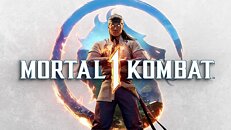
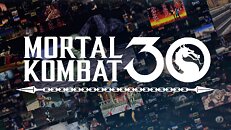

Last October NetherRealm celebrated the Mortal Kombat series' 30th anniversary:
The klassic era
Arcades were shaken to their core when Mortal Kombat hit the scene in 1992. The series takes characters from across the realms to fight and test their might in a martial arts tournament. It's unveiled that the tournament is an ancient ritual to stop a half-dragon warlord of an otherworldly realm from invading and conquering Earth. Our fate lies in the hands of a martial arts prodigy, a special forces agent, and a movie star in way over his head. The series shifts toward full-on wars between the realms, time-traveling shenanigans, and alternate-timeline insanity. Making MK home to one of the wildest and most entertaining story rides in gaming.

Unlike its brethren fighting series, Mortal Kombat used a more realistic aesthetic with digitized graphics to create the cast of the game instead of the then-popular sprite work. This and the gore of the game stole the show, making Mortal Kombat stand out from the competition. Thanks to the game's "Fatality" finishers, complex inputs that'd activate a highly creative and overly gory animation as one kombatant finished off the other for good, the game quickly went down in '90s pop culture history, helping push the perceived need for a videogame age rating system.
Comparatively simplistic to the mechanics of today's fighting titans, the original Mortal Kombat packed in tons of systems seen in the series now. Aside from the aforementioned Fatalities, special moves inputted with simple direction and button combinations (no need for the circular motions), and a dedicated block button are franchise staples. Also, juggle combos-which entail launching your opponent into the air and following up with another attack-are still some of the most hype maneuvers to see, even in the upcoming Mortal Kombat 1. All in all, the original Mortal Kombat is an amazing piece of history to revisit and see where it all started.

Mortal Kombat returned to the arcades a year later, in 1993, with the direct sequel, Mortal Kombat 2. This dug more into the story and events behind the kombat and diversified the Fatalities, including the rage-inducing Friendships and Babalities.
The fighting system was also refined. MK2 added a crouching punch, buffed the roundhouse kick, made crouching punches and kicks more unique from one another, and lowered all-around attack recoveries to allow more combos. Famously, the gameplay was tweaked to run a bit faster than its predecessor, making MK2 a great step up in terms of fun, quality, and challenge.

Mortal Kombat 2 was fast. But Mortal Kombat 3 introduced a run mechanic, allowing characters to literally charge toward their opponent, creating even more combo and pressure opportunities. Speaking of combos, MK3 debuted unique character combo chains. Stage transitions, Mercy finishes, and Animalities also show up for the first time. As with its predecessor, new characters joined the roster, including kompetitive character Kabal, who debuted and would go on to be one of the most used characters in the tournament scene for the game.

Despite these additions, MK3 was seen as a bit of a disappointment due to the lack of certain fan-favorite characters like Scorpion and Kitana. This prompted Midway's release of Ultimate Mortal Kombat 3, an expansion of the title. The gameplay is largely the same, with a few move list additions, balance changes, and the first appearance of the 2-vs-2 mode.
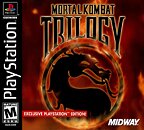
While a version of MK3 was the franchise's debut on PlayStation, Mortal Kombat Trilogy marked the first new title in the series to release on Sony's home console. Being somewhat of a "Best of" celebration of the Mortal Kombat series, the game is built on systems introduced in UMK3, but returns missing characters and stages from MK1 and MK2 to the roster. It also debuts the Aggressor Bar, which boosts attack damage and speed for any kombatant when filled. This title also is where Brutalities originate.
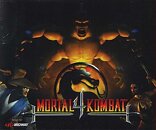
The 3D Era
Deadly Alliance took the Mortal Kombat series in a new direction, iterating on MK4's transition into 3D and improving it further. Ditching the run mechanic and 2D style, Deadly Alliance introduced more variation in character move lists. Each kombatant comes equipped with two hand-to-hand and one-weapon combat styles, all of which can be swapped at the press of a button. This title also comes with Konquest mode, the series' first dedicated story mode, and the debut of the Krypt, a mode where you open up coffins using in-game points to unlock various secrets.

It was followed up by Deception, which expanded the 3D era of the franchise with the addition of stage transitions, interactive stage weapons, insta-kill stage hazards, and a combo-breaking maneuver. This title also introduced Hara-Kiri to the franchise: Self-destruct match enders that are the opposite of Fatalities. These allowed the losing player to input a Fatality-like combination before the winner to end the match on their terms instead of being finished off.
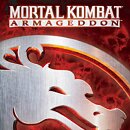
Armageddon is seen by many as the end of the 3D era, and follows the groundwork set by Deception and Deadly Alliance. However, the addition of launcher air combos similar to those in the new Mortal Kombat 1, a parry system, and the ability to create a kharacter and fatality added just enough flavor to make this another well-received entry.
Finally, there's Mortal Kombat vs. DC Universe. While largely its own thing, it did introduce a rich cinematic story mode that'd become standard for future Mortal Kombat titles.
The new era
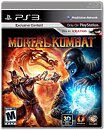
2011's numeral-less entry returned the series to its 2D roots and served as a reboot of sorts, recounting the storyline of the first three games but with a timeline-tampering twist: a future Armaggeddon-era version of Raiden sending a message of warning to his earlier self.
The gameplay is reminiscent of MK2, with all the speed, cheap projectiles, and high-damage kombos intact. Aside from the groundbreaking cinematic story mode, the gameplay brings a few new additions, including the super-combo X-Ray attacks and non-franchise guest characters, such as Freddy Krueger and Kratos (who is exclusive to the PS3 version). There is also the debut of assist attacks in the game's new 2-vs-2 tag match mode.

If Mortal Kombat (2011) can be seen as a modern MK2, then Mortal Kombat X is UMK3. Like its ancestor, X reintroduces the run button, which amplifies combos and lets you apply even more pressure on an opponent. Brutalities also return, but this time appear as finishing blows that are triggered when certain requirements are met. The biggest change is the addition of three different variations for each character that you can choose from during character selection. These alter the cast's movesets and basically make them entirely different characters.
Whereas 2011 and X sped things up, Mortal Kombat 11's gameplay was more methodical and focused on slow decision-making, with the intent being on buffing defense. This was implemented by introducing flawless blocks, a perfectly timed block that allows you a brief window to perform a reversal, while breakaways allowed players to escape juggles.
The offense also gained some new swag in the form of Fatal Blows, a new standard super move replacement for X-Rays that players can only use under 30% health. There are also Krushing Blows, powerful attacks that can be used when specific requirements are met during kombat. The defining feature of MK11 is its customization, which, like X's variations, can completely change a character's move list. However, this time around, you get to decide which moves a character keeps and changes.
Mortal Kombat 1
The Mortal Kombat series has evolved many times over the decades, and it's looking to do so once more with its next reboot, Mortal Kombat 1. So far, we've seen this new entry take some pieces from many of its predecessors to make something all new. You can learn more about it with our hands-on report and interview with series co-creator, Ed Boon.
MK1 - Official Kombat Pack Roster Reveal Trailer!
Justice. Their way. Introducing your roster for the Mortal Kombat 1 Kombat Pack fighters.
It's In Our Blood. Discover a reborn Mortal Kombat Universe created by Fire God Liu Kang. Mortal Kombat 1 ushers in a new era of the iconic franchise with a new fighting system, game modes, and Fatalities!
Pre-order your copy now and join the Kommunity!
View at TechPowerUp Main Site | Source
Ahead of the series returning to-and recreating-its "roots" with Mortal Kombat 1, now is an amazing time to look at how it evolved through the eras.



Last October NetherRealm celebrated the Mortal Kombat series' 30th anniversary:
The klassic era
- Mortal Kombat | Release: 1992
- Mortal Kombat 2 | Release: 1993
- Mortal Kombat 3 | Release: 1995
- Ultimate Mortal Kombat 3 | Release: 1995
- Mortal Kombat Trilogy | Release: 1996
- Mortal Kombat 4 | Release: 1997
Arcades were shaken to their core when Mortal Kombat hit the scene in 1992. The series takes characters from across the realms to fight and test their might in a martial arts tournament. It's unveiled that the tournament is an ancient ritual to stop a half-dragon warlord of an otherworldly realm from invading and conquering Earth. Our fate lies in the hands of a martial arts prodigy, a special forces agent, and a movie star in way over his head. The series shifts toward full-on wars between the realms, time-traveling shenanigans, and alternate-timeline insanity. Making MK home to one of the wildest and most entertaining story rides in gaming.

Unlike its brethren fighting series, Mortal Kombat used a more realistic aesthetic with digitized graphics to create the cast of the game instead of the then-popular sprite work. This and the gore of the game stole the show, making Mortal Kombat stand out from the competition. Thanks to the game's "Fatality" finishers, complex inputs that'd activate a highly creative and overly gory animation as one kombatant finished off the other for good, the game quickly went down in '90s pop culture history, helping push the perceived need for a videogame age rating system.
Comparatively simplistic to the mechanics of today's fighting titans, the original Mortal Kombat packed in tons of systems seen in the series now. Aside from the aforementioned Fatalities, special moves inputted with simple direction and button combinations (no need for the circular motions), and a dedicated block button are franchise staples. Also, juggle combos-which entail launching your opponent into the air and following up with another attack-are still some of the most hype maneuvers to see, even in the upcoming Mortal Kombat 1. All in all, the original Mortal Kombat is an amazing piece of history to revisit and see where it all started.

Mortal Kombat returned to the arcades a year later, in 1993, with the direct sequel, Mortal Kombat 2. This dug more into the story and events behind the kombat and diversified the Fatalities, including the rage-inducing Friendships and Babalities.
The fighting system was also refined. MK2 added a crouching punch, buffed the roundhouse kick, made crouching punches and kicks more unique from one another, and lowered all-around attack recoveries to allow more combos. Famously, the gameplay was tweaked to run a bit faster than its predecessor, making MK2 a great step up in terms of fun, quality, and challenge.

Mortal Kombat 2 was fast. But Mortal Kombat 3 introduced a run mechanic, allowing characters to literally charge toward their opponent, creating even more combo and pressure opportunities. Speaking of combos, MK3 debuted unique character combo chains. Stage transitions, Mercy finishes, and Animalities also show up for the first time. As with its predecessor, new characters joined the roster, including kompetitive character Kabal, who debuted and would go on to be one of the most used characters in the tournament scene for the game.

Despite these additions, MK3 was seen as a bit of a disappointment due to the lack of certain fan-favorite characters like Scorpion and Kitana. This prompted Midway's release of Ultimate Mortal Kombat 3, an expansion of the title. The gameplay is largely the same, with a few move list additions, balance changes, and the first appearance of the 2-vs-2 mode.

While a version of MK3 was the franchise's debut on PlayStation, Mortal Kombat Trilogy marked the first new title in the series to release on Sony's home console. Being somewhat of a "Best of" celebration of the Mortal Kombat series, the game is built on systems introduced in UMK3, but returns missing characters and stages from MK1 and MK2 to the roster. It also debuts the Aggressor Bar, which boosts attack damage and speed for any kombatant when filled. This title also is where Brutalities originate.

The 3D Era
- Mortal Kombat: Deadly Alliance | Release: 2002
- Mortal Kombat: Deception | Release: 2004
- Mortal Kombat: Armageddon | Release: 2006
- Mortal Kombat vs. DC Universe | Release: 2008
Deadly Alliance took the Mortal Kombat series in a new direction, iterating on MK4's transition into 3D and improving it further. Ditching the run mechanic and 2D style, Deadly Alliance introduced more variation in character move lists. Each kombatant comes equipped with two hand-to-hand and one-weapon combat styles, all of which can be swapped at the press of a button. This title also comes with Konquest mode, the series' first dedicated story mode, and the debut of the Krypt, a mode where you open up coffins using in-game points to unlock various secrets.

It was followed up by Deception, which expanded the 3D era of the franchise with the addition of stage transitions, interactive stage weapons, insta-kill stage hazards, and a combo-breaking maneuver. This title also introduced Hara-Kiri to the franchise: Self-destruct match enders that are the opposite of Fatalities. These allowed the losing player to input a Fatality-like combination before the winner to end the match on their terms instead of being finished off.

Armageddon is seen by many as the end of the 3D era, and follows the groundwork set by Deception and Deadly Alliance. However, the addition of launcher air combos similar to those in the new Mortal Kombat 1, a parry system, and the ability to create a kharacter and fatality added just enough flavor to make this another well-received entry.
Finally, there's Mortal Kombat vs. DC Universe. While largely its own thing, it did introduce a rich cinematic story mode that'd become standard for future Mortal Kombat titles.
The new era
- Mortal Kombat | Release: 2011
- Mortal Kombat X | Release: 2015
- Mortal Kombat 11 | Release: 2019

2011's numeral-less entry returned the series to its 2D roots and served as a reboot of sorts, recounting the storyline of the first three games but with a timeline-tampering twist: a future Armaggeddon-era version of Raiden sending a message of warning to his earlier self.
The gameplay is reminiscent of MK2, with all the speed, cheap projectiles, and high-damage kombos intact. Aside from the groundbreaking cinematic story mode, the gameplay brings a few new additions, including the super-combo X-Ray attacks and non-franchise guest characters, such as Freddy Krueger and Kratos (who is exclusive to the PS3 version). There is also the debut of assist attacks in the game's new 2-vs-2 tag match mode.

If Mortal Kombat (2011) can be seen as a modern MK2, then Mortal Kombat X is UMK3. Like its ancestor, X reintroduces the run button, which amplifies combos and lets you apply even more pressure on an opponent. Brutalities also return, but this time appear as finishing blows that are triggered when certain requirements are met. The biggest change is the addition of three different variations for each character that you can choose from during character selection. These alter the cast's movesets and basically make them entirely different characters.
Whereas 2011 and X sped things up, Mortal Kombat 11's gameplay was more methodical and focused on slow decision-making, with the intent being on buffing defense. This was implemented by introducing flawless blocks, a perfectly timed block that allows you a brief window to perform a reversal, while breakaways allowed players to escape juggles.
The offense also gained some new swag in the form of Fatal Blows, a new standard super move replacement for X-Rays that players can only use under 30% health. There are also Krushing Blows, powerful attacks that can be used when specific requirements are met during kombat. The defining feature of MK11 is its customization, which, like X's variations, can completely change a character's move list. However, this time around, you get to decide which moves a character keeps and changes.
Mortal Kombat 1
The Mortal Kombat series has evolved many times over the decades, and it's looking to do so once more with its next reboot, Mortal Kombat 1. So far, we've seen this new entry take some pieces from many of its predecessors to make something all new. You can learn more about it with our hands-on report and interview with series co-creator, Ed Boon.
MK1 - Official Kombat Pack Roster Reveal Trailer!
Justice. Their way. Introducing your roster for the Mortal Kombat 1 Kombat Pack fighters.
It's In Our Blood. Discover a reborn Mortal Kombat Universe created by Fire God Liu Kang. Mortal Kombat 1 ushers in a new era of the iconic franchise with a new fighting system, game modes, and Fatalities!
Pre-order your copy now and join the Kommunity!
View at TechPowerUp Main Site | Source



 Everyone started upgrading strictly due to MK2.
Everyone started upgrading strictly due to MK2.